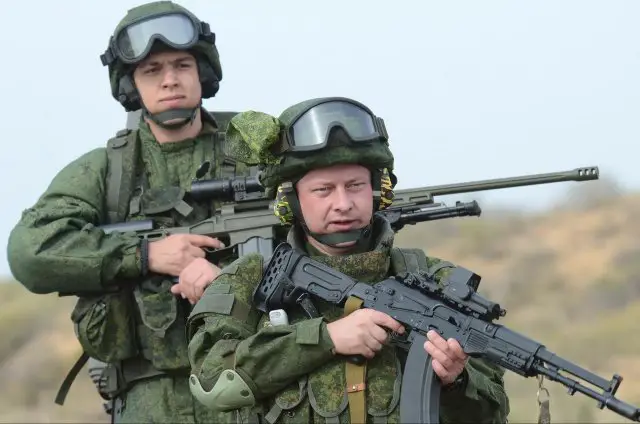| a | |||||
|
|
|||||
|
Defence & Security News - Russia
|
|||||
|
|
|||||
| KRET to supply medical sensors for Russia's future Ratnik individual combat gear | |||||
|
Russia’s Radio-Electronic Technologies Group (KRET) will supply sensors for the next-generation Ratnik ‘soldier of the future’ individual combat gear to monitor the servicemen’s physical and psychological state, adviser to the Group’s deputy CEO Vladimir Mikheyev said on Monday, Nov. 2, 2015.
|
|||||
|
|
|||||
 Russian troops are planned to receive 50,000 Ratnik outfits annually under the contract Russian troops are planned to receive 50,000 Ratnik outfits annually under the contract |
|||||
|
|
|||||
|
"We are offering medical sensors for the Ratnik gear so that commanders and medical staff can stay in touch with a soldier, if he is wounded in the battlefield," he said.
The sensors on the soldier’s body will monitor his state online, from his pulse rate and blood pressure to his psycho-emotional state, Mikheyev added. The data will be transmitted to medical units and immediate commanders, the adviser to the Group’s deputy CEO said. Also, the sensors will allow a soldier wounded in the battlefield to have a communication channel with the medical staff who will be able to offer him assistance taking into account the type of his wound and his general condition, the adviser said. "The sooner we receive this information, the higher the probability of saving the soldier’s life," Mikheyev added. The Russian Army has already started receiving serial Ratnik outfits comprising about 40 items, from small arms to communications and navigation equipment. Russian troops are planned to receive 50,000 Ratnik outfits annually under the contract, but it was reported later that the order might be increased to 70,000 outfits a year. Russia’s Central Research Institute for Precision Machine-Building (TsNIITochMash), the developer of the Ratnik gear, told TASS earlier that the new health sensors would be included in the next-generation soldier combat outfits whose elements the institute would start to develop in two years. |
|||||
| © Copyright 2015 TASS. All rights reserved. This material may not be published, broadcast, rewritten or redistributed. | |||||














